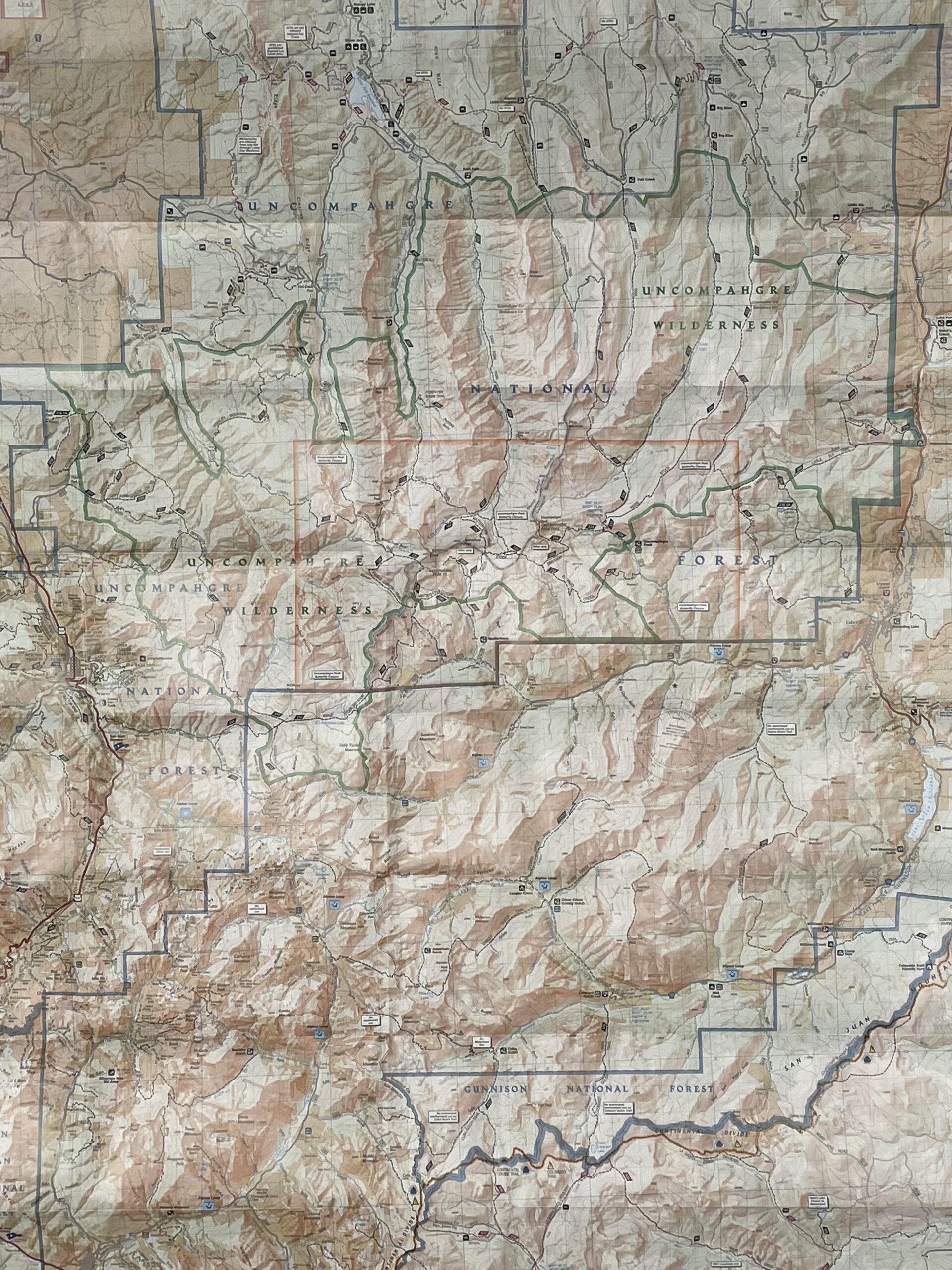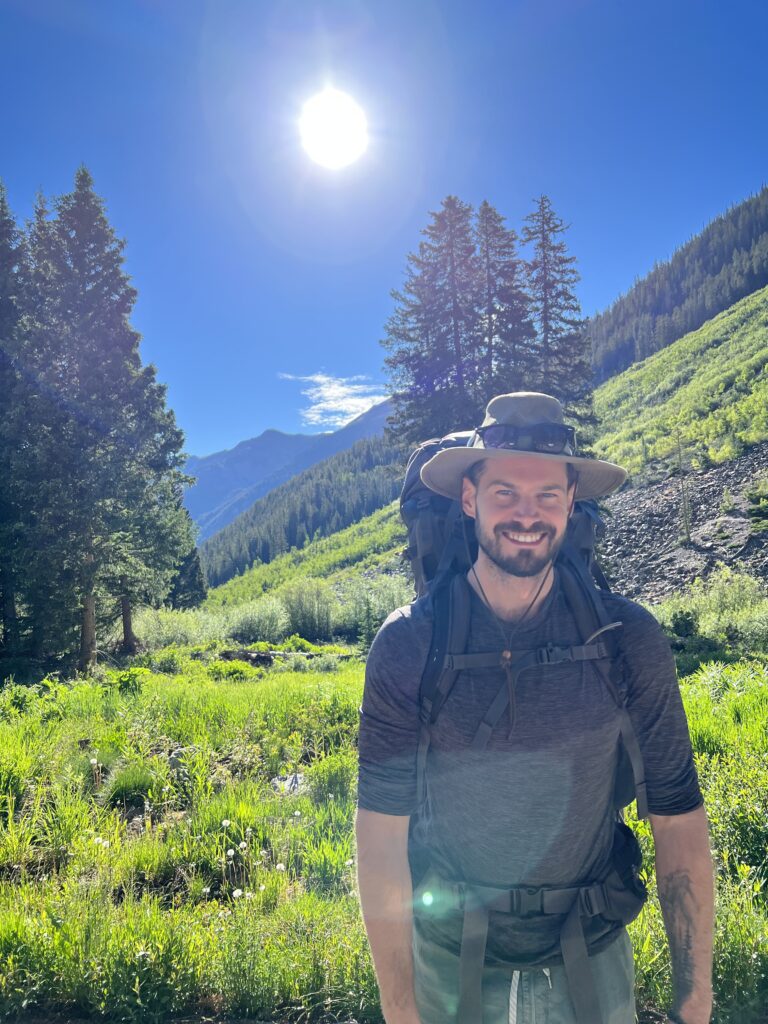While America’s public lands are best known for world-class outdoor recreation and sight seeing, they also serve some of the most important needs in our society. The final part of this public land series will review exactly why the public lands are so important, and why we must continually protect and preserve these areas now and for future generations.

They provide water and other key resources
Everything from water, air quality, soil, timber, natural gas, coal, oil, and minerals are largely managed by the public land system, as well as state and local municipalities. The general public benefits, or sometimes suffers, from the management of these resources. For example, over 180 million people in the United States depend on water sourced from public lands, including 3400+ communities and cities such as Los Angeles, Denver, and Atlanta. Unfortunately, some communities have felt the consequences of improperly managed resources, such as in 2015 when Colorado’s Gold King Mine released 3 million gallons of mining waste water that contaminated rivers in 3 states.
Either way, it’s evident that our communities – even city dwellers seemingly far from public lands – are highly impacted by them. Progress is being made towards a future with more renewable energy sources. But today humans still heavily depend on coal, oil, and rare earth minerals to create things like iPhones so we can download AllTrails, drive our cars to explore National Forests, and plug in our laptops to write a blog post. With the technology and materials we currently demand as humans, it’s hard to imagine a future that’s entirely devoid of some of those resources.
As with many things, the topic of resource management is nuanced and deservers a separate post all together. But for now, it’s important to know just how much of a role public lands have in most people’s lives, regardless of whether you don’t live in close proximity to a public land.
They support a $1 trillion economy and 5 million jobs
Individual communities depend on the jobs and recreational/tourism economy that surround public lands. This includes government employees, hunting and fishing outfitters, hiking guides, mountain rescue teams, and local restaurants and stores. Overall, outdoor recreation contributes $1 trillion annually to the economy and supports 5 million jobs, and is reported to have more economic output than oil and gas extraction, and mining, combined.
All of this economic activity brings a huge boost to our rural communities. Think of all the small towns on the periphery of National Parks or National Forests where you drive through and eat, find lodging, or restock your supplies for a camping trip. With a highly seasonal dependence, this makes your visitation and patronage all the more important in these communities and towns.
Support for public lands means you’re not just supporting the wildlife and ecosystems, but also the communities and citizens who live in and around these areas. Check out this great article to learn more – Outdoor recreation economic impact.
History and cultures are memorialized
Indigenous cultures and artifacts, historical battlefields, the birthplaces of key historical figures – these are all preserved by public lands and serve as a great educational platform and memorial. These important sites are often overshadowed by the natural wonders of public lands, like El Capitan in Yosemite National Park. But to visit a place like the Sand Creek Massacre National Historic Site in Colorado is a profoundly emotional and humbling experience, one that teaches you about our history and the cultures that originally inhabited these areas.
As you begin to explore all the public land system has to offer, you’re likely to encounter many of these hidden gems. Countless times I’ve driven down forest service roads and found small historical markers, old spring water fountains once used for thirsty tourists in the 1930’s and cooling down overheated car radiators, plaques or statues to local heroes for their contributions to their communities, or ancient pathways used by indigenous cultures following the migratory routes of game animals.
Wildlife and natural ecosystems depend on it
It’s hard to imagine the US without the natural splendors and wildlife within it.
Grizzly bears, black bears, mountain lions, wolves, coyotes, jaguars (yes, there are jaguars in the southwest of the US, though not many), elk, moose, deer, caribou, bald eagles, hawks, bobcats, wolverines, otters, whales, salmon, trout, desert tortoises, tree frogs, banana slugs, expansive old growth redwood forests, jagged mountains and valleys, raging rivers and emerald lakes. This barely reveals the complexity of life in the US.
Through conservation we’ve been able to protect many of these key areas so our wildlife neighbors can thrive, which is why you can see these iconic animals today. But these places are under constant threat from isolation and encroaching human development. As these habitats shrink, the health and survival of these animals and ecosystems diminishes, which directly impacts air and water quality, natural disaster mitigation, food sources, migratory routes, and other valuable resources that we and other animals depend on from the natural world.
It would be a lonely and hostile place without our wildlife kin, and our public lands help to ensure we never reach that outcome.
It’s yours
Most people don’t have vast acres of private land to go hiking, fishing, hunting, camping, study geology, or see historical landmarks and sites. But don’t forget…public land is for the public. That’s you. And you have 614 million acres of public land to explore, which has all those opportunities and then some.
It’s part of your heritage as a citizen. Yes, some of them require additional fees which are used for maintenance, labor, conservation, protection, SAR (search and rescue). Pretty important things. But as you have learned in the articles What Are America’s Public Lands? and How To Explore The Public Lands In America, there are countless public lands which you can access free of charge.
Endless recreational opportunities
Outdoor recreation is a key reason public lands exist. But what’s often overlooked is how varied are these activities.
Of course you have adrenaline filled sports like mountain biking, rock climbing, or trail running. But they also provide key hunting and fishing areas, or educational activities like archeological excursions or historical studies. Let’s not forget backpacking, skiing, wild mushroom foraging, base jumping, kayaking, canoeing, off-roading, wilderness survival training, spelunking, scuba diving…
The point is, whatever experience you’re looking for – adrenaline filled, nourishing, educational, meditative – it can be had on public lands.
Mental health in a highly technological world
I’m not exactly a luddite, but as technology continues to improve our lives and shape our everyday environments, I think it’s ever more pertinent that we take time to disconnect and immerse ourselves to nature.
To what degree you should do this depends entirely on you. But any kind of natural exposure such as in a local park under a tree, in a mountain cabin, or deep inside a vast forest can be highly beneficial. And it’s not just the visuals and greenery of nature. It’s also the sounds, scents, and touch of natural elements that have dramatic affects on humans. There’s numerous clinical studies to back this up (see sources below) with some of the benefits including:
- Improved attention
- Improvements in working memory
- Reduced risk of psychiatric disorders
- Improved blood pressure
- Improved sleep
- Improved positive social interactions
- Increased oxygen intake around forests
- Increased feelings of pleasure and happiness
There is even something called the Biophilia hypothesis which proposes that because our ancestors spent millions of years surviving in the wild, we have an evolutionarily and genetically influenced need to be in natural settings. Out of our 300,000+ year history, humans have only spent the last 75ish years glued to television screens, and now cell phones and computers. Sensory overload.
This underscores the importance of stepping out of the digital realm for and into the natural. And our public lands are a great way to do that. Of course it depends on your location, but however you can do it, for however long, get outside and away from screens for an extended period each day.
Intrinsic value
All those beautiful postcards you see of snow-capped mountains, or those NatGeo Magazine photos of tall, ancient forests…those places are not out of reach. They are here in your country, and they are as awe inspiring as people make them out to be.
It’s places like these where some of the most inspired thoughts arise, where the most dramatic scenery appears, or where of the most raw moments of life transpire. These lands were sacred to other societies and indigenous cultures for a reason, and they still hold that sacred value for many today. Yes, we will always have an impact on these places by hiking and camping on them, but this is why we have principles like “Leave no Trace,” or why certain designations of public lands are more stringent than others.
And you don’t have to go extreme hiking or backpacking to see these places. There are more than enough public lands that are accessible by car, light walking, or other modes of transportation. However you arrive at them, they can leave you in awe.
How to support our public lands
Without them, all the above would be virtually non-existent, or would be severely threatened. This would be bad for a lot of communities, cultures, wildlife, ecosystems, and your health. Between 2001 and 2017 we have lost 24 million acres of federal public land to urban development, resource extraction, private sales, and other means.
I have commended the efforts made by America to conserve and protect our public lands, and it’s deserving. But we are in a losing battle. With so many issues to consider it’s hard to know where to begin to help. Please check out our page to find a few ways on how you can begin to support public lands.
Thank you
I hope these articles have given you the understanding, instructions, and inspiration to explore and support our public lands. If you have not already, please read the other articles in our public land series to learn more about What are America’s public lands?, and exactly How To Explore the Public Lands in America.
Want a guide or itinerary for camping and backpacking? Check out our trip guides.
Enjoy the journey – J. Wasko

About the author
Jeremy Wasko has been exploring our public lands for over two decades, with thousands of miles and hundreds of camping trips completed. Through his adventures, he discovered that our public lands are more than just places to camp and recreate. They are cultural and historical sites, sacred places to different peoples, and the very sources of our clean water, air, and other critical resources.
He created Magna Terra to share his knowledge on how to explore and enjoy our public lands, and also how to protect and conserve them for future generations.
Learn more about Jeremy and the founding of Magna Terra here.
* Please note I do not have any affiliation with any of the agencies, products, or links referenced in this post, and I am providing the information purely from personal recommendation and experience.
Sources
(Current Directions in Psychological Science, Vol. 28, No. 5, 2019)
https://www.ncbi.nlm.nih.gov/pmc/articles/PMC9186521/
https://www.ncbi.nlm.nih.gov/pmc/articles/PMC8125471/
(Van Hedger, S.C., et. al., Psychonomic Bulletin & Review, Vol. 26, No. 2, 2019).
https://www.apa.org/monitor/2020/04/nurtured-nature
https://e360.yale.edu/features/ecopsychology-how-immersion-in-nature-benefits-your-health